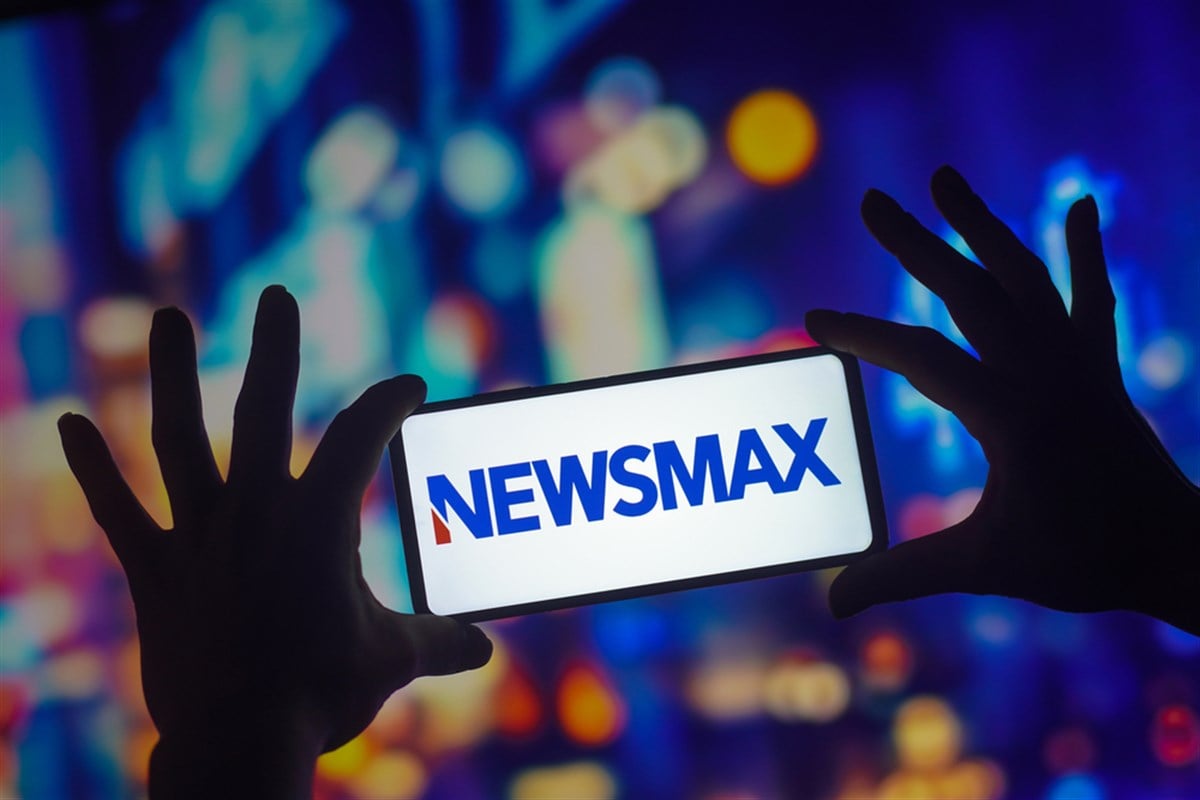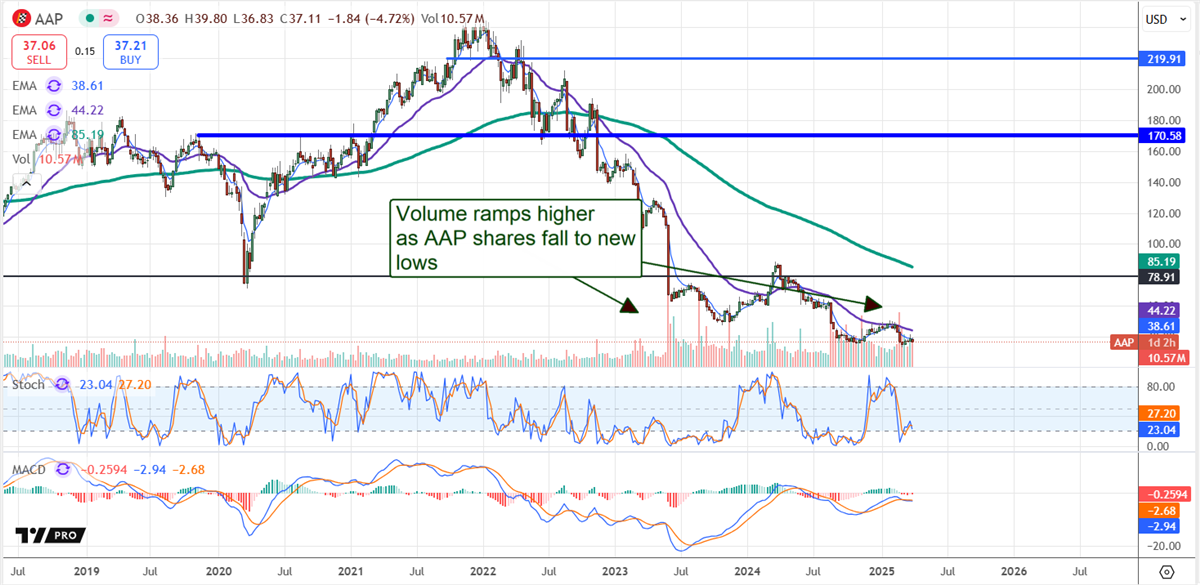 Newsmax's Regulation A+ market launch on the NYSE generated exceptional share volatility, demonstrating widespread engagement among... ͏ ͏ ͏ ͏ ͏ ͏ ͏ ͏ ͏ ͏ ͏ ͏ ͏ ͏ ͏ ͏ ͏ ͏ ͏ ͏ ͏ ͏ ͏ ͏ ͏ ͏ ͏ ͏ ͏ ͏ ͏ ͏ ͏ ͏ ͏ ͏ ͏ ͏ ͏ ͏ ͏ ͏ ͏ ͏ ͏ ͏ ͏ ͏ ͏ ͏ ͏ ͏ ͏ ͏ ͏ ͏ ͏ ͏ ͏ ͏ ͏ ͏ ͏ ͏ ͏ ͏ ͏ ͏ ͏ ͏ ͏ ͏ ͏ ͏ ͏ ͏ ͏ ͏ ͏ ͏ ͏ ͏ ͏ ͏ ͏ ͏ ͏ ͏ ͏ ͏ ͏ ͏ ͏ ͏ ͏ ͏ ͏ ͏ ͏ ͏ |
| | Written by Jeffrey Neal Johnson 
Newsmax Inc.’s (NYSE: NMAX) opening week on the New York Stock Exchange delivered a masterclass in market volatility, leaving investors breathless and analysts scrambling for comparisons. The conservative media company’s shares experienced a turbulent debut. After pricing its offering at $10, the stock opened at $14 on March 31st, 2025, only to start a near-vertical ascent. Within two days, Newsmax stock price rocketed past $250, peaking at an intraday high of $265 on April 1st. The surge represented a gain exceeding 2,000% from its initial offering price, triggering multiple trading halts along the way. Yet, the euphoria proved fleeting. By April 2nd, gravity reasserted itself with brutal efficiency as the stock plummeted, shedding nearly 80 percent of its peak value to close just above $52. This extreme price action immediately drew comparisons to meme stocks like GameStop (NYSE: GME) and Trump Media & Technology Group (NASDAQ: DJT), signaling a potential disconnect between market enthusiasm and underlying business fundamentals. Unconventional Entry: How Newsmax Tapped Retail Investors Newsmax, founded as a digital brand in 1998, expanded into cable television in 2014. The company has positioned itself as a conservative voice in the media landscape. While Nielsen data cited by the company places the Newsmax channel as the fourth highest-rated cable news network, it is important to note that its viewership figures remain substantially smaller than those of industry leaders like Fox News. Newsmax pursued a less common route to the public markets, utilizing a Regulation A+ offering. This mechanism allows smaller companies to raise capital up to $75 million over 12 months with streamlined disclosure requirements compared to a traditional Initial Public Offering (IPO). Crucially, Reg A+ offerings often focus on attracting non-accredited retail investors. Newsmax successfully raised its maximum target of $75 million through this process, reportedly selling shares to approximately 30,000 individuals. Meme Mechanics: Small Float, Big Impact for Newsmax Newsmax's dramatic, albeit brief, price explosion was likely due to several factors. A key factor was the limited supply of shares available for trading, known as the "float." With only 7.5 million shares issued in the IPO, representing roughly 6% of the company's total potential share count, high demand in the market significantly amplified price movements. The Reg A+ offering structure successfully targeted retail investors, whose collective buying activity, potentially driven by political alignment or online speculation, appears to have overwhelmed the initial supply. The intense volatility itself drew further attention to the stock, leading to frequent trading halts to curb extreme price swings. Some market observers noted that the rapid ascent and limited float might have also made short selling difficult or prohibitively expensive, potentially removing a counterbalancing force and allowing the rally to extend further. Grounding the Hype: A Look at Newsmax's Bottom Line Newsmax's reported financials contrast starkly with the market frenzy surrounding its shares. Despite generating $171 million in revenue in 2024, the company also reported a substantial net loss of $72 million for the year, following a net loss of $41 million in 2023. The company's revenue streams include advertising (approximately two-thirds of 2024 revenue), cable carriage fees, subscriptions, and direct marketing. Concerns have been raised about the company's heavy reliance on advertising revenue due to its potential vulnerability to economic downturns. Additionally, cable carriage fees are dependent on the pay-TV ecosystem, which is experiencing a secular decline in subscribers. Some analysts have also expressed concerns about the reported negative growth in the digital revenue segment during 2024. At its peak, Newsmax's market capitalization briefly approached $30 billion, with a share price near $265. This valuation not only dwarfed that of established, profitable media giants like Fox Corporation (market cap around $25 billion at the time) but also implied an astronomical price-to-sales ratio exceeding 170. This is far removed from typical industry metrics, further reinforcing the "meme stock" characterization, where market sentiment and momentum appear to take precedence over traditional valuation. Investing the IPO Windfall: Where Newsmax Heads Next With $75 million in gross proceeds from the IPO and $225 million raised from a prior private placement of preferred stock to accredited investors, Newsmax leadership has outlined plans to fuel growth. The stated strategy involves investing the capital infusion into enhancing its core television programming, expanding its digital footprint across platforms like Newsmax.com and its mobile app, and bolstering its subscription-based streaming service, Newsmax+. CEO Christopher Ruddy has emphasized a focus on long-term results and building the business, suggesting a desire to look past the extreme short-term share price volatility. The successful execution of these growth initiatives will be critical in justifying a market valuation that aligns more closely with sustainable business performance rather than fleeting market sentiment. Moving forward, the market will closely monitor the effectiveness of these investments in driving viewership, digital engagement, and subscription revenue. High Volatility Demands Extreme Caution Newsmax's entry into the public market has been anything but ordinary. The extreme volatility witnessed in Newsmax shares underscores its current status as a highly speculative investment, driven more by retail sentiment and market dynamics than by established financial performance. The stark contrast between the initial stratospheric valuation peak and the company's documented history of financial losses creates a high degree of uncertainty. While the company aims to deploy its newly raised capital toward growth, investors must weigh these ambitions against the considerable headwinds. The "meme stock" characteristics suggest that sharp price swings could continue, detached from fundamental developments. As the post-IPO quiet period for underwriter analysis approaches its expected end on May 12th, more traditional research coverage may emerge. However, for the foreseeable future, navigating Newsmax stock requires a high tolerance for risk and careful consideration of the potential disconnect between its market narrative and its operational and financial realities.  Read This Story Online Read This Story Online | Elon Strikes Back
You may already sense that the tide is turning against Elon Musk and DOGE. Just this week, President Trump promised to buy a Tesla to help support Musk in the face of a boycott against his company. But according to one research group, with connections to the Pentagon and the U.S. government, Elon's preparing to strike back in a much bigger way in the days ahead. Click here to see what they're predicting now. |
| Written by Jea Yu 
At its recent annual shareholder meeting, The Walt Disney Company (NYSE: DIS) made a powerful case for its renewed financial strength, operating discipline, and strategic clarity. Under the stewardship of CEO Bob Iger, Disney is evolving from a post-pandemic recovery story into a multi-engine growth platform. Shareholders and analysts were able to get an inside peek into the consumer discretionary sector giant. The company’s performance in 2024 and plans for 2025–2026 paint a picture of a media and entertainment conglomerate with reliable cash flows, high margin opportunities, and global brand leadership. Studio Segment: Scalable IP That Drives Revenue Across Verticals Disney's core differentiator remains its premium intellectual property (IP) and its ability to monetize that IP across multiple platforms: theatrical releases, streaming, merchandise, parks, gaming, and licensing. The company’s Studios division achieved $5.5 billion in global box office revenue in 2024, led by Inside Out 2, Deadpool & Wolverine 2, and Moana 2, each generating over $1 billion individually. This performance not only reaffirmed Disney’s dominance in global storytelling but highlighted the durability of its franchises even in a shifting content economy. The pipeline for 2025–2026 reinforces the value of long-term IP planning. Scheduled releases include Pixar’s Elio, Thunderbolts and Fantastic Four: First Steps from Marvel, Zootopia 2, Avatar 3, and a live-action Stitch. Importantly, the company is developing a Coco sequel for 2029—underscoring its multi-year roadmap and commitment to storytelling as a financial engine. This level of IP scalability supports not just box office revenue but ancillary monetization through streaming subscriptions, park attractions, and merchandise. In a margin-sensitive environment, Disney’s content strategy allows for cross-platform efficiency—a critical lever in delivering earnings growth while containing costs. Streaming Segment: Profitability Milestone, Bundling Synergies Disney’s Direct-to-Consumer (DTC) division, which includes Disney+, Hulu, and ESPN+, reached profitability for the first time in 2024, a major turning point that signals the maturation of a multi-year investment cycle. With over 240 million global subscriptions across its services, the segment is now entering a phase of margin expansion rather than user acquisition at any cost. The integration of ESPN+ into Disney+—expected in Fall 2025—is a strategic bundling move aimed at increasing ARPU (average revenue per user) and reducing churn. Disney is positioning itself as an all-in-one platform with content streaming services for families, sports fans, and general audiences, rivaling the depth and utility of competitors like Netflix or Amazon Prime. This evolution is critical from an investment perspective. Streaming was once a cash-burn segment for Disney; it’s now a positive contributor to EBITDA, supporting free cash flow generation and potential future capital returns. While management did not disclose updated plans around its FuboTV (NYSE: FUBO) partnership, its rights portfolio for live sports, combined with ESPN+, offers a formidable competitive moat. Experiences Segment: High-Return Capital Deployment in Physical Assets Disney’s Experiences segment—which includes theme parks, resorts, and cruise lines—continues to be the company’s highest-margin and most capital-efficient business. In 2024, this segment generated over $8 billion in operating income, with margins exceeding 30%, driven by record attendance and per-guest spending at domestic and international parks. At the shareholder meeting, Iger unveiled the largest slate of expansion projects in Disney’s history. The Magic Kingdom is undergoing its most significant expansion ever, with new lands themed around Cars, Monsters Inc., and Disney Villains. Additional attractions are coming to Animal Kingdom, Hollywood Studios, and California Adventure, featuring IP like Encanto, Indiana Jones, Coco, and The Lion King. These projects are not just crowd-pleasers—they are cash flow multipliers. Disney estimates that these expansions will increase park capacity by 20–25% by 2027 and drive a mid-teens return on invested capital (ROIC) over their lifetime. This is compounded by pricing power: Disney continues to raise ticket prices in line with demand, with no apparent impact on visitation. Iger reaffirmed that park demand remains “extremely strong,” and per-capita guest spending has tripled since pre-pandemic levels. The cruise line is also scaling, with seven new ships under construction following the 2024 debut of Treasure. New vessels like Destiny and Adventure, arriving in 2025, are expected to double cruise capacity by 2026, targeting high-net-worth consumers in a sector with strong pricing resilience. Gaming: Entering a $200B Market With IP-Driven Potential In a forward-looking move, Disney announced a $1.5 billion investment in Epic Games, the creator of Fortnite. This partnership is intended to integrate Disney characters and stories into the gaming metaverse, creating new forms of fan engagement and monetization. The global gaming market is worth over $200 billion annually, and Disney's entry represents a calculated, high-upside bet with relatively low capital risk compared to its physical assets. Corporate Governance and Capital Stewardship Following a contentious 2024 proxy battle with Nelson Peltz, this year’s meeting reflected stability and alignment. All board members were re-elected, and executive compensation—including Bob Iger’s $41.1 million package—was approved by shareholders. Three activist proposals were overwhelmingly rejected. The only outstanding question is succession. Iger’s current contract ends in 2026, and no successor was named. While this introduces a degree of uncertainty, the Board has signaled that leadership continuity is a near-term focus, and investors should expect clarity in the coming year. A Multiyear Re-Rating Story in Motion Disney is no longer in recovery mode—it is a platform company with multiple growth engines. Streaming is now profitable, and the parks are delivering high-margin growth. Content is not only thriving but fully integrated into a diversified monetization ecosystem. With gaming, cruise, and global expansion in play, the company is positioned for sustained earnings acceleration. Disney checks every box when investors are searching for companies with durable competitive moats, brand equity, pricing power, and cross-platform revenue leverage. With the stock still trading below pre-pandemic valuation multiples, DIS represents a long-term opportunity with asymmetric upside and expanding free cash flow.
 Read This Story Online Read This Story Online | |
| Written by Thomas Hughes 
Advance Auto Parts (NYSE: AAP) stock can rebound in 2025. The company is working hard to simplify its structure and reposition itself for sustainable, profitable growth centered on improving store metrics and aggressively increasing store count. The company targets 30 new stores this year and another 100 by the end of 2027, good for nearly a 3% increase, and more are likely. The real question is how high the stock price might get once the rebound begins, and it could be quite high due to factors including insider buying, institutional interest, capital return, and short-selling. Capital return will be a critical factor in this retail stock rebound because it was crucial to the stock price decline. The company boldly announced it had begun a series of aggressive dividend increases in 2020, only to fall flat a few years later. The struggle with growth, operational quality, and rising costs led to an 85% cut still in place. The opportunity for investors and the potential catalyst is a dividend increase that could happen once growth resumes. Analysts forecast the company will revert to growth in the next fiscal year and sustain a modest CAGR thereafter, with margin improvement along the way. Adjusted earnings are predicted to grow at a more substantial double-digit CAGR through the middle of the next decade. The Sell-Side Sets Advance Auto Parts Stock Up For a Rapid Price Acceleration Sell-side activity is setting up Advance Auto Parts stock for a significant rally, with insiders and institutions buying and short interest high. Insider buying includes the CEO and a director. This is noteworthy because the Q1 purchases are the first significant buying in a year, and the volume set a multi-year high. The CEO’s purchases are small but telling, while the director roughly doubled his position in a conspicuous affirmation of the business. Regarding the institutions, they have bought this stock on balance in every quarter since Q4 2023, when the stock price imploded. Their activity hit a low point in mid-2024 but ramped up in Q3 and Q4 and again in Q1 2025 to hit a multi-year high. The group owns nearly 90% of the stock and provided a solid base of support in Q2 2025, which is compounded by analysts' sentiment. The analysts’ sentiment trends include a price target reset that weighs on the action but is offset by increasing coverage, firming sentiment, a solid Hold rating, and a forecast for 20% upside. The factor that sets AAP stock up for a rapid price advance is the short interest. The short interest is down from its peaks in 2021 and 2022 but remains high in early 2025. It is up compared to the back half of 2025 at nearly 15% and a headwind for the market that could quickly become a tailwind. The opportunity is for a short-covering rally or short squeeze caused by the return to growth and operational improvement that may be revealed in upcoming quarters. 
Advance Auto Parts Trading at Deep Value Levels The charts show Advance Auto Parts' deep value. Despite the business repositioning and improving outlook, the stock is trading at a 15-year low and well below the critical support levels set in 2018 and 2020. The market is overextended at these levels but shows signs of an impending reversal. Those include the bullish MACD and divergent stochastic, which indicate strengthening support and bulls regaining market control. The question is how high the rebound may go, which could be significant. A rebound to reclaim highs set in 2024 is worth 100% of upside in 2025. However, critical resistance is near $45.75, and the long-term EMA still indicates a downtrend. It may remain in place because of external factors, including the tariff environment and competition from AutoZone (NYSE: AZO) and O’Reilly Automotive, which are growing in 2025.  Read This Story Online Read This Story Online | This market is absolutely terrifying…
Bloomberg recently reported that Wall Street funds are dumping their stocks at an alarming pace.
Then again, considering the once-popular tech stocks have lost a third of their value this year alone… it really doesn't come as a surprise.
And if you're taking a "wait and see" approach to the market right now… it'll likely be years before you recover.
AND you're likely leaving a TON of money on the table. Let everyone else panic… choose profits instead. |
|
| |
|
|